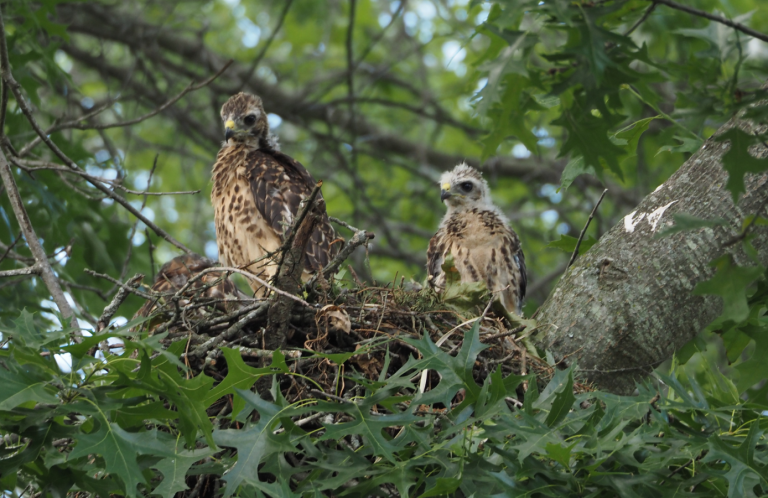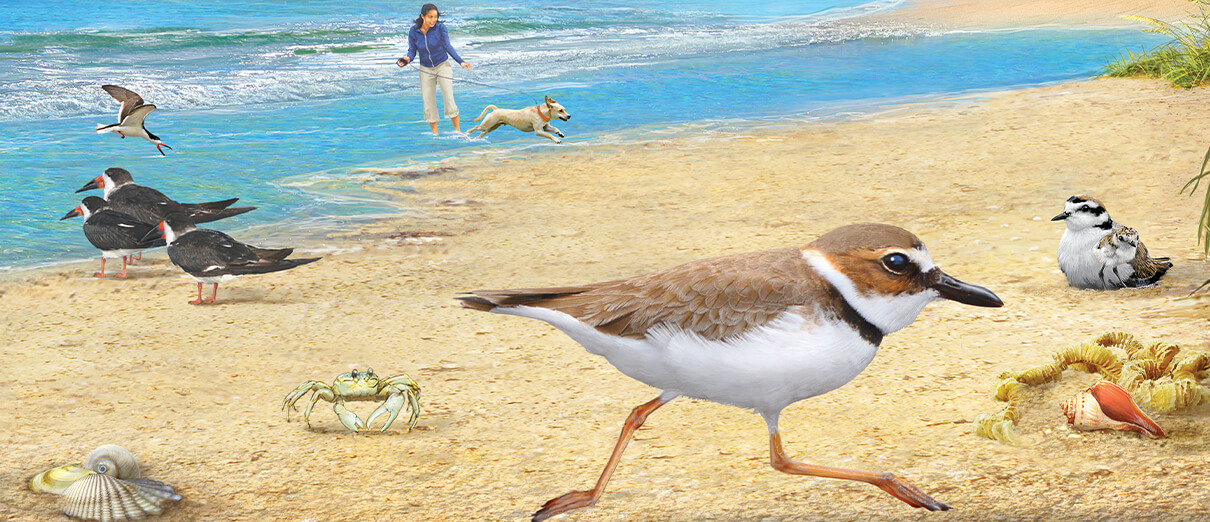Split Decisions: The Taxonomic Revolution and How It Affects Conservation
In recent years, it has come as a surprise to me, a long-time birder and ornithologist, to suddenly discover that the Summer Tanagers in my neighborhood are no longer tanagers at all: They're grosbeaks! And that blackbirds and orioles are no longer almost at the end of the bird book; they've marched up before the wood-warblers!
Ornithology has seen a revolution in the last few decades, with systematics — the study of the relationships between bird species and families — reordered in ways that might not seem intuitive to those not steeped in bird science. Why, for example, were the falcons moved away from hawks and eagles, to right next to the parrots, and the parrots to just before the songbirds? Those are just two changes we see in our North American field guides. Worldwide, the taxonomy — naming and ordering — of birds, their families, and orders has undergone some dramatic changes.

But wait, there's more! There have also been many lower-level changes in bird species and their names. This shows up mainly in splitting of species into two or more species. A particularly dramatic example is the Rufous Antpitta, an enormously cute little bird of Andean cloud forests that was shattered into 12 species. Less frequently, species changes involve lumping two into one.
What's causing all of these changes, and what does it mean to us?
The major reason for most of what we're seeing now is the dramatic improvement in scientists' ability to study and analyze bird DNA and genetics. Before the 1980s, ornithologists were mainly restricted to looking at the plumage and body and bones of a bird, although we did have some ability to compare vocalizations. Our access to DNA and genetic information was very limited. That has changed. Today, the laboratory systems and equipment needed for obtaining and analyzing DNA data are more readily available and relatively inexpensive, and the computing power and databases needed to make comparisons are ubiquitous.
Although this scientific laboratory work has given us tremendous insight, birders shouldn't sell themselves short on what their contributions have been to our knowledge of avian life. Another important reason for the changes we're seeing in bird classification is that we now have a lot more basic information about birds than before.
Research used to be mainly restricted to museum specimens, which, outside the U.S. or Europe, were obtained from relatively few places. There were far fewer eyes on the ground, and most species' life histories were poorly known. Nowadays, we have many more birders and ornithologists living in and traveling to remote locations around the world. They study and send back eBird and other database records, confirming photographs, habitat notes, and recordings. Observations of many rare birds, or ones once thought rare because their habitat was so remote, have taught us much more about them, and their differences and similarities.
This knowledge has allowed ornithologists to identify species groups and places that need more investigation. For example, once it's known that a species like the now-former Rufous Antpitta shows a lot of variation in song, ornithologists can use genetic tools to evaluate whether or not that variation in vocalizations indicates different species. So, hold on to your life list and keep your eyes peeled because this explosion of bird information, combined with DNA evidence, not only means that you have to keep up to date with recent splits: In the not-so-distant future, there may be many — many — species split into more than one new species. One analysis has shown that if the current rate of species-splitting continues, we may find ourselves with as many as 18,000 bird species in the world — almost twice as many as now.

Changes in the sequence or grouping of bird families and orders is interesting from a scientific point of view, but these changes don't have much impact on bird conservation. The splitting and resulting jump in the number of species, however, make a big difference.
Most of us who work in conservation rely on species lists, because species are usually our “operational units,” the groups that we focus on. The IUCN Red List of Threatened Species, for example, evaluates the level of threat to species, assigning them to categories such as “Endangered” or “Least Concern,” among others. Because of this, it can be very important if a species is lumped or split. A “new” species split off from a common one, for example, can be very rare, and therefore immediately recognized as threatened. The widespread Gray-cheeked Thrush is not a threatened species, but when the Bicknell's Thrush was split from it, this new species, once just considered a separate subspecies of the other, was immediately recognized as Vulnerable on the Red List.
This happens fairly often when species are split because what was once a larger population becomes two or more smaller ones, and population size is an important criterion for determining whether something is threatened or not. Most of the 12 species of the former Rufous Antpitta have small ranges, each representing only a small part of the original range, and several of them will likely garner threatened status, once assessed. (The split is very recent, and the new conservation status assessment hasn't been completed.)
Although some conservation efforts take groups smaller than species into account, currently, most conservation is directed toward species. (An exception is the U.S. Endangered Species Act, which recognizes subspecies and even Distinct Population Segments.) It is much easier to attract attention to the plight of a threatened species than it would be if that same population were an unrecognized subgroup. Plus, it's much easier to raise funds and bring legal or regulatory resources to bear for a species' conservation.

This, then, is why the revolution in bird taxonomy makes a difference to conservation. It means that we now have more species to which we must direct our conservation efforts, but that we can also attract public and government attention to these species. Having many more species may make it seem that the task is more daunting, but the goal was always the same — to conserve all birds — and now it's just in clearer focus.
It's exciting to live in a time when new knowledge about birds is advancing so rapidly. It can be discombobulating, too: Like when you come upon the Cassia Crossbill in your new bird book and think, “What is that?” Or when you fumble through your field guide and find that cormorants no longer reside toward the front of the book (they now come way after the ducks). These changes, though, reflect improving knowledge about birds. And science is about continually working to make things better, clearer. As just discussed, these changes also help us hone our strategies to conserve birds for future generations. So, in a number of ways, the taxonomy revolution keeps us on our toes!
 David Wiedenfeld is ABC's Senior Conservation Scientist. He received his Ph.D. from Florida State University. His work has focused on bird population ecology and conservation biology. David served for five years as Director of Research at the Sutton Avian Research Center, working primarily on prairie-chickens. He was also Head of the Department of Vertebrate Ecology at the Charles Darwin Research Station in the Galapagos Islands.
David Wiedenfeld is ABC's Senior Conservation Scientist. He received his Ph.D. from Florida State University. His work has focused on bird population ecology and conservation biology. David served for five years as Director of Research at the Sutton Avian Research Center, working primarily on prairie-chickens. He was also Head of the Department of Vertebrate Ecology at the Charles Darwin Research Station in the Galapagos Islands.

















































